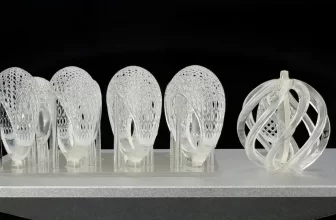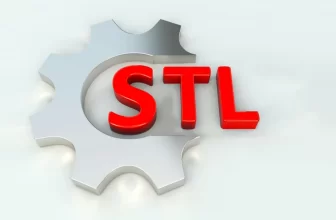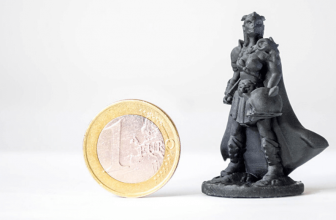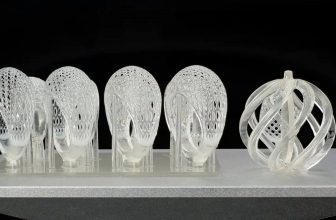Before starting to 3D print, you must consider so many settings to avoid failed prints that it becomes overwhelming most of the time. In the midst of all this, a setting that we often ignore is the nozzle setting.
Do we ever consider checking the 3D printer nozzle size before we jump into the next print every time? Or, do we verify the 3D printer nozzle height for that matter?
As you know that nozzle is the component that comes in contact with your filament in the end before deposition, you must decide on choosing the right one.
It would definitely help you enhance your 3D printing skills. A lot of experts and professionals feel that nozzle choice immensely impact the end result. Hence, users must take care of the nozzle setting before starting the new 3D print.
You may think it may put you through another four weeks of lessons. However, that is not the case. To start with, all you need to know is the difference between nozzles along with the pros and cons of each choice.
The basic information would help you figure out a lot yourself. So, why not what makes these nozzles different from each other and how they impact the overall 3D print quality? For starters, let us first talk about what the nozzle is.
What is a 3D Printer Nozzle?
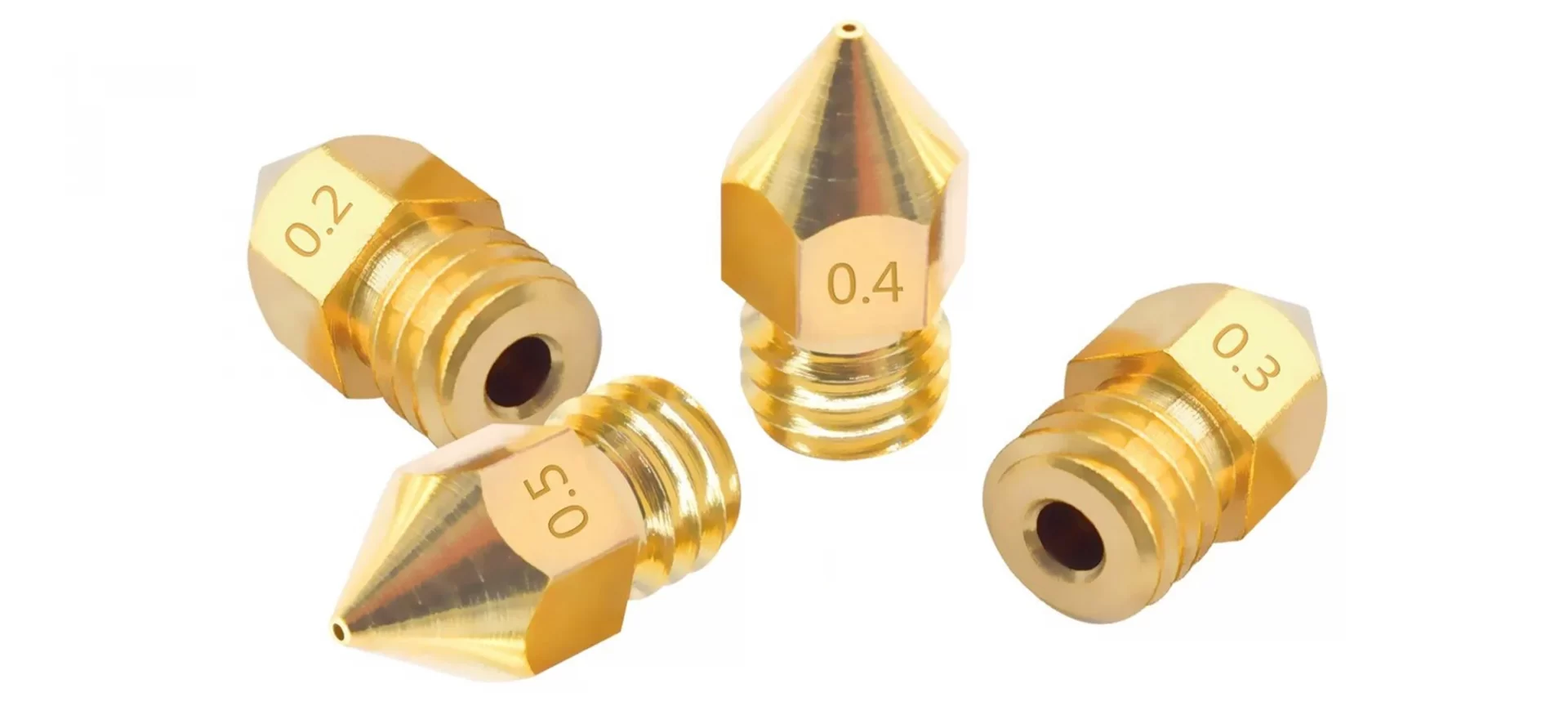
The nozzle is one of the most important components of the 3D printer. It is designed to extrude filament on the build plate. Hence, it is the last part with which the filament makes contact before deposition.
Nozzle selection can have a significant impact on the way your 3D prints turn out in the end. Apart from the quantity of material used to the quality of the prints, a lot of things depend on the nozzle selection.
Hence, the nozzle can be characterized according to different sizes and materials.
The selection of the nozzle would also depend on a few other parameters.
- The diameter of the filament you wish to use. Usually, the filaments are available in two standard sizes, 1.75mm, and 3.00mm diameter.
- The Nozzle diameter sizes also vary. The size includes diameters of 0.25mm, 0.3mm, 0.4mm, 0.5mm, 0.6mm, 0.8mm, and 1.0mm.
- The filament material would also help choose the nozzle size. Most of the composite filaments need a larger filament to extrude. We would discuss this further in the article in detail.
- You must also consider threading including pitch and angle
- Last but not the least, shaft length also matters
How 3D Printer Nozzle Size Impacts 3D Prints?
We have already seen in the prior section that the size of the nozzle varies vastly. You can find different options between the range of 0.1 mm to 1.0 mm.
Not only the choices provide huge flexibility to the maker to get to the desired result. It also ensures that the critical prints could be accomplished without compromising the intricate details. The question is: Which one is the best for your 3D print?
The first thing you must understand that the nozzle helps you regulate the amount of filament extruder and the speed of the completion of the prints.
Those with more than 0.4 mm diameter are considered as larger nozzles. Hence, you must know which ones are chosen when wanting to print with the smaller ones. Anyway, to be frank, any nozzle with less than 0.4 mm nozzle diameter falls into that category.
When you are up to choose the right nozzle, you must find a balance between the amount of filament extruded at once and how fast it is extruded.
As you can understand, the larger nozzle will extrude material in a greater amount. On the contrary, the smaller nozzle will deposit less material amount as compared to the larger nozzles.
When looking at the other perspective, the precision would be higher with a smaller nozzle and it would be comparably lower for larger nozzle diameter.
What to Expect When Using Different 3D Printer Nozzle Size?
3D printer nozzle diameter, as already mentioned, can change the entire 3D model you just printed. Let us check what things you must expect when using different 3D printer nozzle size.
Larger 3D Printer Nozzle Diameter: Usually the ones with a diameter greater than 0.4mm.
- These provide high strength to the end parts
- They can print faster because of the greater amount of filament extruded through their ends. Hence, it ends up with reduced print time.
- These usually are not much prone to nozzle problems such as clogged nozzle
Smaller 3D Printer Nozzle Diameter: Usually the ones with a diameter less than 0.4mm.
- The nozzles are best suited when you need to accomplish 3D prints with higher precision
- Because of the tiny ends, they often get clogged, if not cleaned properly
- These can produce great quality overhangs
- Supports printed with smaller nozzle tend to separate easily
Before you go ahead and choose the nozzle, you must think of all the things you need from your 3D print. You may seek high precision, but you cannot ignore the problems of late prints and excess material usage.
Alternatively, you can also not have the fastest print that does not look good at all. That is why the most common used 3D printer nozzle size is 0.4mm. It does provide the expected quality and completes the print inconsiderate time.
However, you can certainly pick another one, depending on your needs. With all that said, you must first assess your needs to find the right 3D printer nozzle size you should use.
This would help you make the right selection. And, your nozzle choices would differ for different 3D prints, if you change your requirements too.
What Are the 3D Printer Nozzle Materials Used?
Do you know that the nozzles are made of different materials? And, like 3D printer nozzle size and height, the material also makes a huge impact on the end results.
Those who have been working with 3D printers for long would know the fact. Usually, home 3D printers come equipped with brass nozzle.
This is because the brass nozzle is able to cater to the needs of home applications which usually involve non-abrasive filaments.
However, if you are using an abrasive filament, you must choose the nozzle that could keep things safer. If you choose the nozzle that does not support the filament you are introducing to it, it will tear down and get damaged, running your compete build.
So, why take that chance if you only need to be a little bit vigilant about the different materials used for creating nozzles.
Let us find out the various materials used to build nozzles for differing strength needs.
Brass
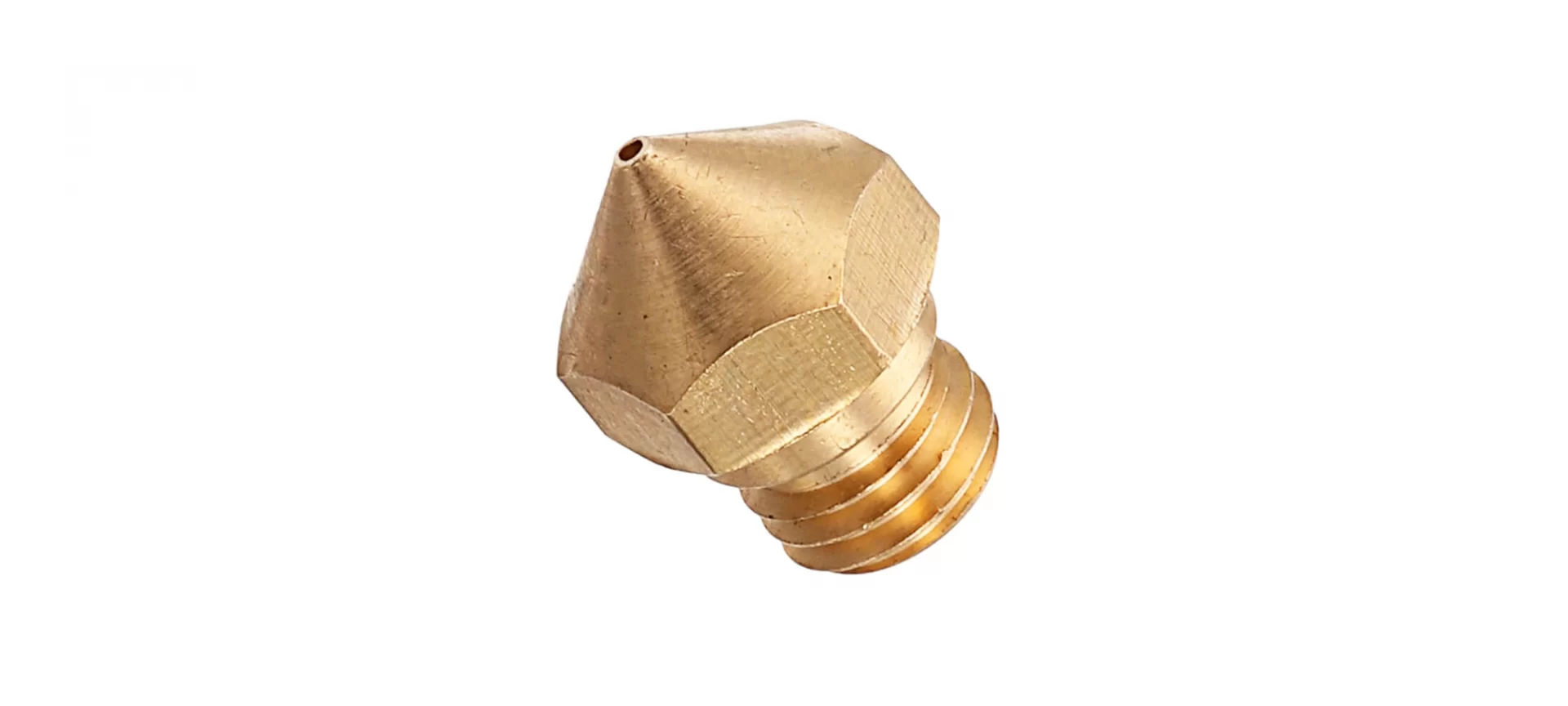
The most common of all is the brass. This material is very often used for most of the FDM 3D printers. These are capable enough to handle a huge list of varying filament choices.
However, they are only designed to support non-abrasive filaments. You can use PLA, ABS, PETG, TPE as well as Nylon. There are other non-abrasive filaments also compatible with this nozzle material.
Stainless Steel
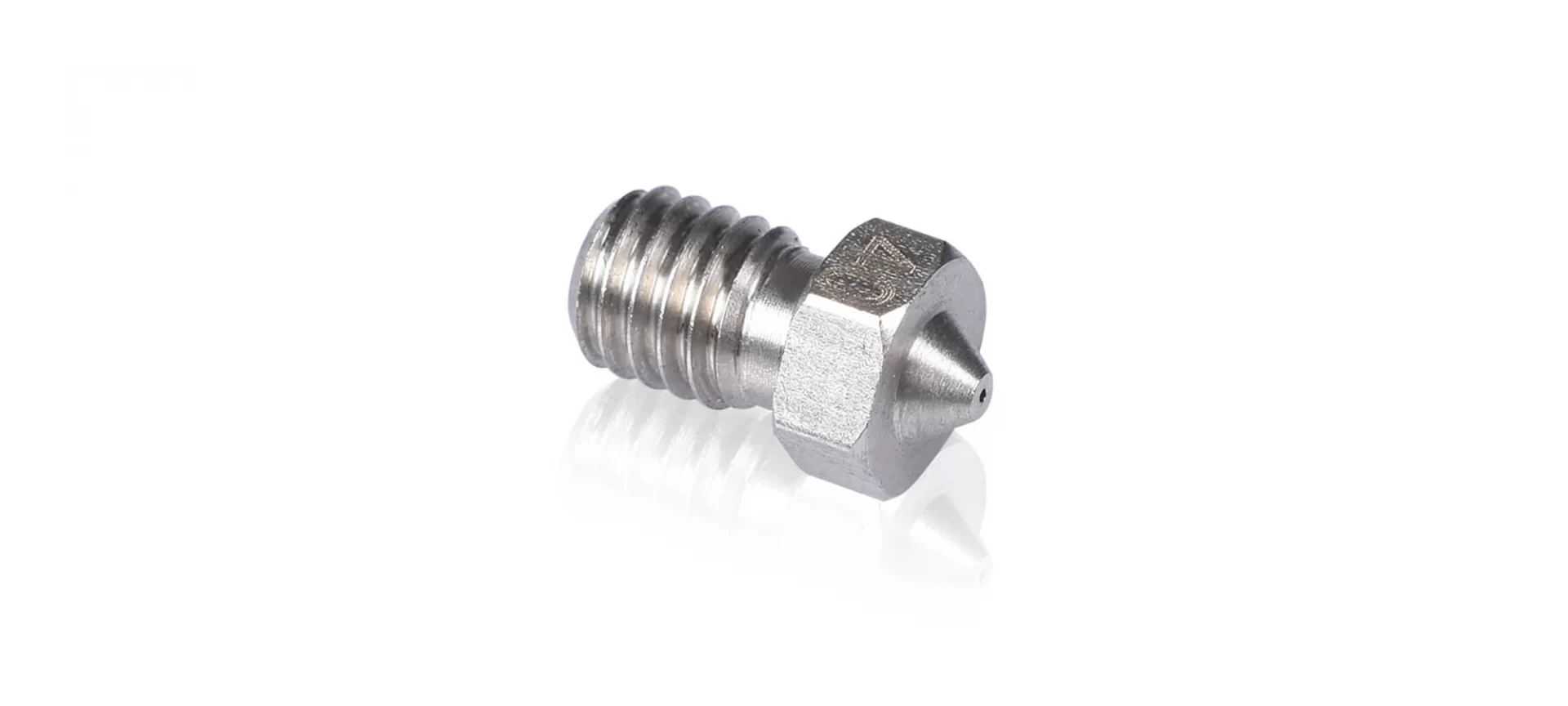
The material can suffice abrasive filaments. However, these can only last for the short term. Hence, these must be only purchased if you have an occasional need for 3D Printing with abrasive materials.
Or else, you may have to replace more often than expected. In such cases, you can better go with hardened steel or ruby tipped nozzle.
Here is the list of filaments that the stainless steel could support:
- Carbon fiber
- NylonX
- Glow-in-the-dark filaments
- Brass-filled metal filament
- Steel-filled metal filament
- Ceramic-filled
- Iron-filled metal filament
- Wood-filled
Hardened Steel
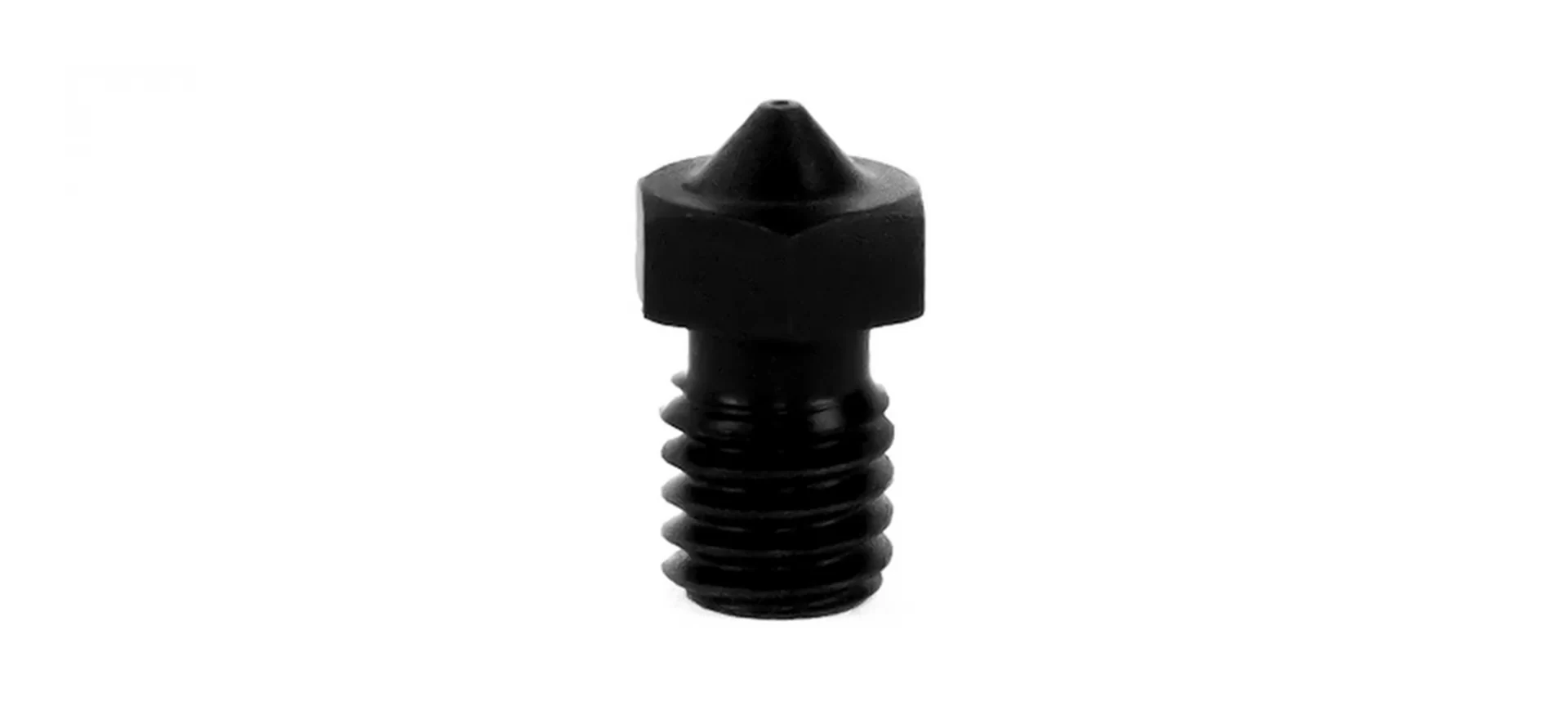
These have a longer life than the stainless steel material based nozzles. These also let users make models with abrasive materials.
Hence, if you feel that your use of abrasive filaments is more than usual, you must go for this choice.
It allows all the filaments that the stainless steel nozzle is compatible with.
Ruby Tipped
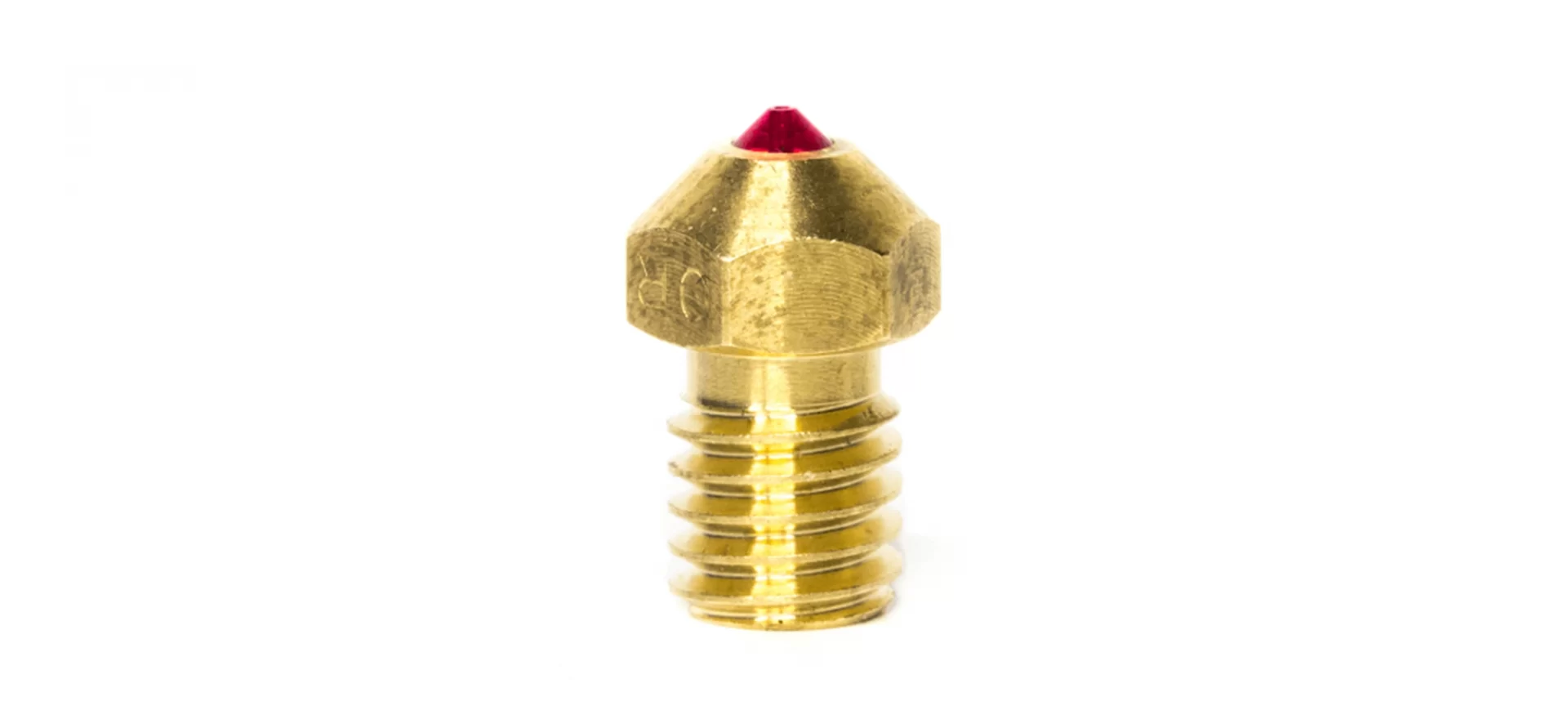
Olsson Ruby Nozzle – 1.75mm x 0.40mm
This is one more material that supports abrasive filaments. You can consider this as an alternative to hardened steel nozzles. These last even longer than the hardened steel nozzle.
These are designed to withstand constant abrasion. Thus, you can expect these to be highly expensive. If your usage isn’t too often with abrasive filaments, there is no use to buy this one.
In terms of filaments list, it supports all those options that are compatible with Stainless steel and hardened steel nozzles.
How to Measure 3D Printer Nozzle Size?
You must be thinking why is it even necessary to talk about this. Isn’t the 3D printer nozzle size is mentioned on the side of the nozzle? It sure is.
But you may not be able to reach out to that information in all circumstances. The most difficult situation is when the nozzle is mounted in your extruder.
There are chances that you may not have printed with your machine for a while and now you do not remember the last nozzle you fixed for extrusion.
Moreover, there are chances that the abrasive materials may wear down the nozzle to enlarge the diameter with a few mm of difference.
Hence, sometimes, it becomes important to gauge the 3D printer nozzle diameter even when it is engraved on the side. Start with extruding a small quantity of material in the space.
Make sure to carry the process slowly, or else, fast extruding may change the size. Use the coolest setting to ensure the speed stays low for up to 1mm/s. Filament expands after cooling down. Hence, the coolest setting would minimize that difference.
After the filament cools down, check the size using a micrometer. These are great in terms of accuracy than the digital calipers. However, if you don’t have one, the digital calipers would do the task as well.
There is one more thing to note. To know the volume the filament expanded after cooling could help you find out how the actual precision would be. So, you can try with a faster speed too.
Last but not least. You must also find out the volume of filament extruded. This particular metric would depend on the actual filament diameter as well as the speed with which you are delivering your filament to the build plate.
The Conclusion
3D printing is not just about getting the 3D file ready and feeding it to the printer for making the model come to life. There are many factors that work in between to produce the desired 3D models.
You cannot just expect your 3D Printer to provide amazing results, without putting any effort from your end. This would take you nowhere.
To learn 3D printing, you must put enough of your time and patience to learn about the bigger as well as the minute detail of the machine.
From layer height to nozzle selection, every setting must be visited twice to ensure you do not end with a failed print. All these things make sense.
You won’t like to spend your time and filament only to ruin your 3D prints. Hence, by all that we have here, you must understand how important it is to pick the right nozzle every time you start the next print.
You cannot just trust your guts and let your 3D printer take charge of all other things. 3D printer nozzle could help you find the right precision and speed of prints if selected properly.
You must check the kind of filament you are using for your 3D prints. Also, you must find out the diameter of the filament. And, there are a lot of other things you should consider.
This activity must be followed by every new print. Not necessarily, if you are not changing your preferences much from the last 3D print.
But, as you know, the more accurate your 3D printer nozzle size and material would be, the safer your prints would come out. In addition, you will achieve the desired precision and speed balance as well.



